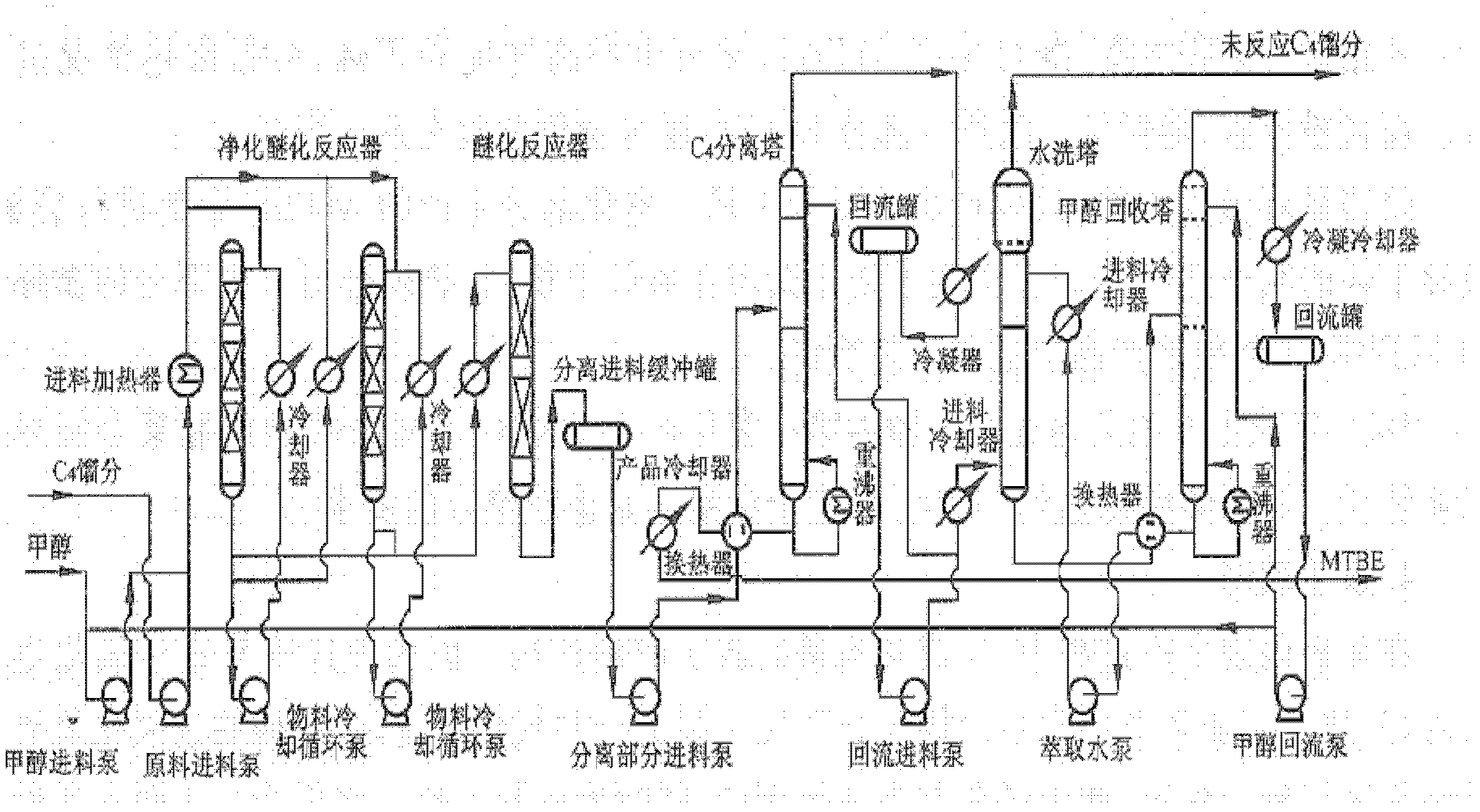Method for preparing isobutylene by etherification
A technology of isobutylene and etherification, applied in the direction of producing hydrocarbons from oxygen-containing organic compounds, etc., can solve the problems of high energy consumption, high reaction temperature, single product, etc.
- Summary
- Abstract
- Description
- Claims
- Application Information
AI Technical Summary
Problems solved by technology
Method used
Image
Examples
Embodiment 1
[0036] The separation of isobutene in the C4 fraction by etherification is divided into two steps:
[0037] The first step is the reaction of isobutylene and methanol in the C4 fraction to generate methyl tert-butyl ether (MTBE) under the catalysis of strongly acidic cation exchange resin;
[0038] The second step is to crack MTBE. The reaction of isobutene and methanol etherification into MTBE is reversible, so under appropriate conditions, MTBE can be decomposed into high-purity isobutene and methanol in contact with acidic catalysts. There are four types of acidic catalysts: supported sulfate catalysts, solid phosphoric acid catalysts Or ion exchange resin catalyst, see process for details figure 1 .
Embodiment 2
[0040] The separation of isobutene in the C4 fraction by etherification is divided into two steps:
[0041] The first step is the reaction of isobutylene and methanol in the C4 fraction to generate methyl tert-butyl ether (MTBE) under the catalysis of strongly acidic cation exchange resin;
[0042] The second step is to crack MTBE. The reaction of isobutene and methanol etherification into MTBE is reversible, so under appropriate conditions, MTBE can be decomposed into high-purity isobutene and methanol in contact with acidic catalysts. Among them, there are four types of acidic catalysts: supported sulfate catalysts, solid phosphoric acid catalysts or Ion exchange resin catalyst, see process for details figure 1 .
PUM
 Login to View More
Login to View More Abstract
Description
Claims
Application Information
 Login to View More
Login to View More - R&D
- Intellectual Property
- Life Sciences
- Materials
- Tech Scout
- Unparalleled Data Quality
- Higher Quality Content
- 60% Fewer Hallucinations
Browse by: Latest US Patents, China's latest patents, Technical Efficacy Thesaurus, Application Domain, Technology Topic, Popular Technical Reports.
© 2025 PatSnap. All rights reserved.Legal|Privacy policy|Modern Slavery Act Transparency Statement|Sitemap|About US| Contact US: help@patsnap.com



